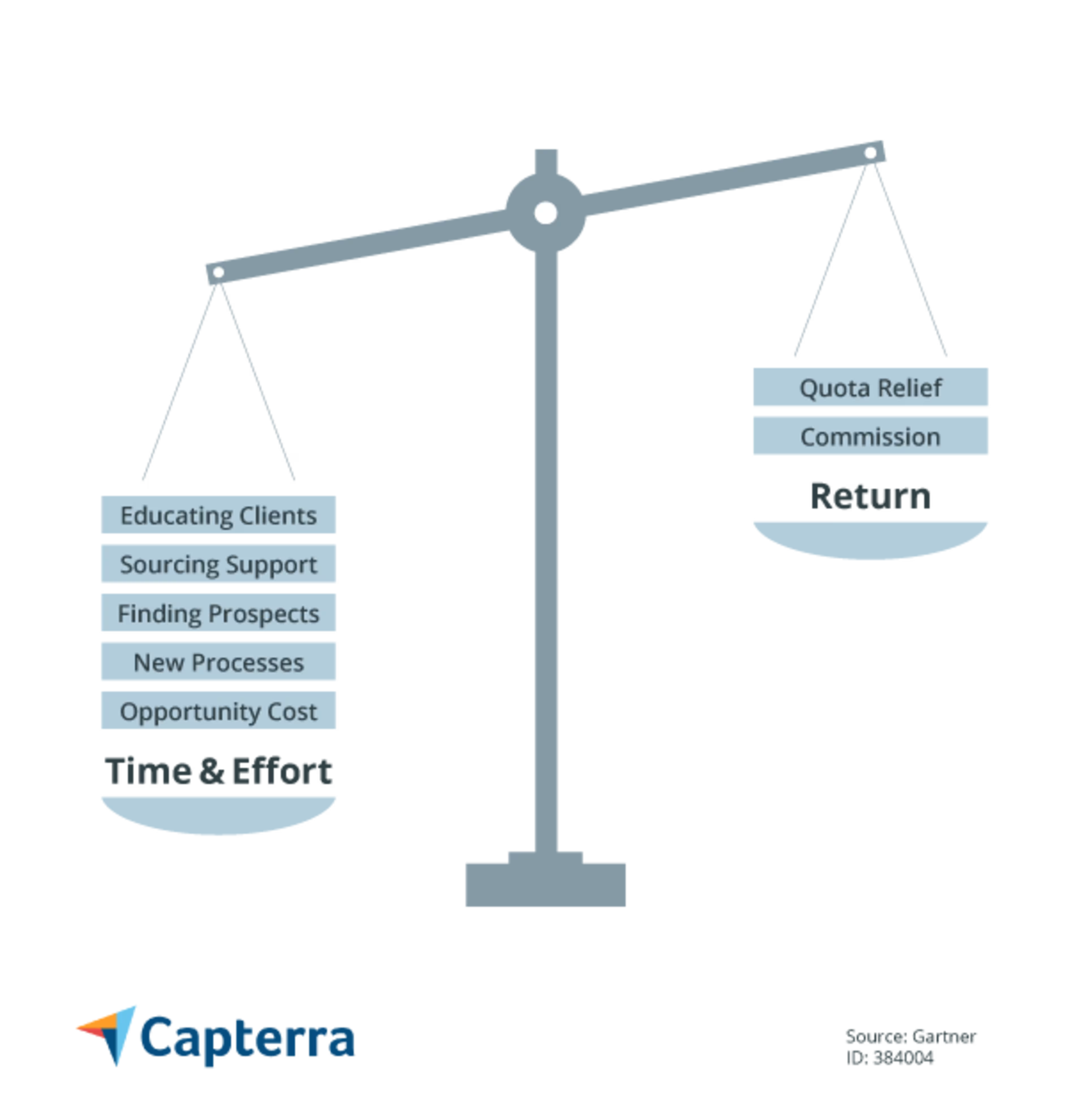Struggling to get your sales reps to sell a new product? These expert tips will motivate them and improve their engagement with the new product.

In April 1981, Xerox launched the Xerox Star. It was the first-ever commercial system to include a bitmapped display, a window-based graphic user interface, icons, folders, a mouse, Ethernet networking capabilities, file servers, print servers, and email. Those familiar with the history of personal computing argue that Xerox Star changed the notions of how interactive personal computers should be designed.
However, Xerox Star never took off.
Instead, Microsoft Windows and Apple Macintosh launched soon after and became household names.
So, what went wrong for Xerox Star?
Thomas Steenburgh, who was at Xerox when Xerox Star had been phased out by 1990, believes that part of the responsibility for the product's failure rests with Xerox's sales team. “The sales force was great at selling their existing products and they had no idea how to sell new products," he said in an interview on HBR IdeaCast.
This challenge is not unique to Xerox.
Whether you are selling software, water purifiers, or professional services, the launch of a new product can often be undersupported by the sales team. However, as a business owner, sales leader, or sales manager, there are steps you can take to keep this from happening and ensure that your sales team is optimally engaged and prepared to meet the expectations.
But before we dive into those steps, let's try to understand the challenge.
What makes sales engagement for new products challenging?
When selling a new product, sales reps need to become the agents of change. They need to convince the buyer to adopt a new way of doing something without the reputation or years of examples, case studies, and results that back their assertions when selling an established product.
This role of the change agent can be quite challenging and not every salesperson will be keen on assuming it.
Michele Buckley, a Research Director at Gartner focused on sales effectiveness and enablement, says, “Don't assume that sales reps will be automatically excited to sell your new product just because they work for your company. The reality is that new products represent extra effort, time, and risk, which experienced salespeople prefer to avoid because it leads to lower ROI."
In fact, sales reps selling a new product, on average, spend 35% more time meeting with customers throughout the sales cycle than they do when selling established products. If the return on time and effort spent selling the new product is lower than that of selling established products, it will be difficult to engage the sales team and get them to commit to their full potential.
This delicate balance of effort, selling time, and return can be better understood in the following graphic:

How to improve sales engagement when launching a new product?
The key to generating high sales engagement is providing sales reps with low-risk, high-benefit offerings that require the least amount of selling time and effort and provide a high ROI.
When launching a new product, there are systematic steps you can take to reduce the risk for sales reps, increase their benefits, and ultimately increase their ROI.
Step 1. Analyze the seller's return on time and effort
The first thing you need to do is consider the sales rep's perspective on the time and effort she would need to invest while selling the new product. To do this, it is best to speak with the sales rep directly, or the first-line sales manager who is closest to the sales rep.
Other things to consider when analyzing seller ROI are the length of the sales cycle and the time and effort of opportunity identification. Also take into account the time and effort spent in sourcing knowledgeable sales support, navigating processes and procedures around the new product, and educating and inspiring customers when analyzing seller ROI.
Step 2: Evaluate the seller's opportunity risk
Risk is among the two most frequent internal objections to technology purchases, leading to deals dying or stalling; this is according to a Gartner study of 506 technology buyers who spent a minimum of $25,000 in annual contract value (full content available to Gartner clients only).
However, this risk factor doesn't apply solely to technology purchases. Whenever sales reps have to convince buyers to go for a new product, they are essentially asking the buyers to take a greater risk with the purchase. That can result in losing the sales opportunity entirely.
Additionally, sales reps can be averse to risking their existing customer relationships by introducing new products. Some may worry that a poor outcome can negatively impact their ability to sell anything to that buyer in the future.
Evaluating and accounting for these risks can help improve sales engagement. Other opportunity risks to consider include disruptions within existing sales opportunities and perceived win rate of the new product. Also contributing to risk perception: seller's confidence to advise and deliver; alternative comparable and established offerings; and any potential interdependencies and requirements of the new product.
Step 3: Use commission adjustments, 'SPIFs,' and contests to remedy issues in seller ROI
Typically, in a sales rep's earning structure, commissions are a critical part of the variable pay. If the commission on selling a new product is considerably lower than the commission on selling an established product, sales reps are less likely to engage with the new product.
This was seen when a well-known technology and service provider launched a cloud offering in an attempt to shift the focus of the business and cannibalize its existing on-premise offering (research available to Gartner clients only). However, the company failed to align the commission on selling the cloud offering to the corporate strategy of shifting to the cloud. And the sales team continued to receive greater short-term compensation for selling the on-premise offering.
As a result, the sales team continued to focus on the on-premise product, thus remaining disconnected from the overall revenue strategy of the company.
Such a situation can be remedied by tweaking the sales compensation structure to encourage selling the new product. You can also consider a sales performance incentive fund—or a “SPIF"—as well as more immediate rewards such as sales bonuses and contests when launching a new product.
Step 4. Adjust pricing and bundling of the new product
If the pricing of the new product dramatically differs from that of established products, it can sometimes be challenging as well as discouraging for sales reps. For example, a sales rep who typically works on $50,000 deals could find it a little disheartening to work on $5,000 deals.
In such a situation, you can consider creating special introductory bundles that combine your new product with your established offerings and increase the deal size. You can also consider establishing tiered pricing to reward volume buyers and give sales reps the leverage when upselling.
A note of precaution: Keep in mind that the pricing and bundling of the new product should be determined by market forces and customer value. Don't tweak them solely to motivate sales reps and improve their engagement.
Step 5. Redistribute sales efforts to other resources
Reducing the sales effort in identifying and progressing sales opportunities for a new product can improve its sales engagement.
To reduce this effort, consider redistributing some of the tasks to either specialist resources or resources in other teams. For example, you can designate a sales operations specialist to create a list of target buyers. You can also enlist shared or regional sales teams to support early sales meetings, or leverage underutilized staff in the product development team to serve as an expert for the new product.
This would reduce the burden on your sales reps, increasing their return on time and effort investment and ultimately improving their sales engagement.
Step 6. Minimize the seller's perception of risk
Evaluating the seller's risk isn't enough. Minimizing the seller's perception of risk by communicating to them about the new product can improve sales engagement.
Share success stories and case studies of beta or pilot buyers (if available) with your sales reps. This would help them see the value of the product and assure that it is worth the risk. You can also share success stories from other sales reps who have successfully sold the new product to showcase how it can be done.
Detailed documents showing why the new product is better to sell than comparable offerings could also be helpful. Additionally, internal resources to help sellers with details of prospective buyers and setting up virtual or in-person introductions and interactions can also impact the seller's perception of risk.
Next steps: Explore tools to improve sales engagement
Though the above-mentioned measures to improve sales engagement for a new product cannot be fully automated using technology, there are various tools that can help you implement them. Below are some tools you can consider:
Customer relationship management (CRM) software: Create a central repository of all potential and existing buyers and manage interactions with them.
Lead management software: Automatically track the movement of potential buyers through the sales life cycle and measure the time and effort investment into selling each product.
Sales enablement software: Facilitate better collaboration within the team or with members in other teams such as marketing and product. This will help sales reps keep their pitches consistent and aligned with the overall strategy of the business.
Sales automation software: Manage accounts, leads, opportunities, and buyer interactions within the same system. Also, help management generate accurate sales forecasts and gain better insight into opportunities.
If you are considering any of these sales tools for your business, you can explore the top products in each category and their reviews on our website. If you already use any of these sales tools, share your experience with us in the comments below.